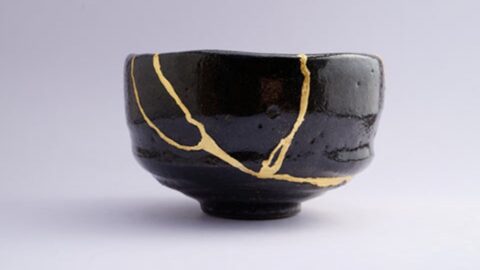The Cracked Pot

Over the last few weeks, our Senior School students have been completing their student reflections in readiness for their end-of-semester transcripts.
This process has required them to reflect on their achievements, their learnings – both in and out of the classroom, and what strategies and structures have helped them to make progress across Semester 1.
For many, these strategies and structures were drawn from the teachings of their Academic Advisory and Wellbeing sessions. At the end of the reflection, students are asked to consider a goal or ‘area for improvement’ they wish to work on in Semester 2.
Like many in our community, I am eager to read these reflections as they provide a valuable insight into what the girls value in their education, and how they see themselves progressing along their journey.
As the students consider what their futures hold, and what they hope to get out of their whole school experience, we held two Middle Years Assemblies with students in Years 7 to 9. The assemblies provided some alternative perspectives on how they might choose to move forward. The theme was goal setting, although I’d like to think it went a little bit deeper than the SMART goal setting of old.
For some students, the idea of a goal is exciting, motivating, and aspirational. It gets them out of bed in the morning and drives them towards making a positive difference to themselves and to those around them. For some, the idea of goal setting is overwhelming – where do I even start? For others, it’s just not that interesting.
No matter where your daughter sits on that continuum, goal setting, just like reflection, is an important part of the learning journey. It helps in structuring efforts, maintaining focus, and achieving desired outcomes. It is why we invest the time into ensuring every student engages fully in this process, culminating in a written reflection which is published alongside their transcript.
To help make this process simpler for the students in the Middle Years, we proposed two options for thinking about their own ‘areas for improvement’ for next semester. They are:
- Accept what they find challenging and do nothing.
- Don’t accept it and change it.
There are pros and cons to both approaches, but sometimes, the choice is that simple…and sometimes, it’s not.
In the second session, I proposed to the students a third option:
- Change your mindset
What if, instead of thinking of all our faults and ‘areas for improvement’ as things to accept or change, we could modify our whole belief system around what we want to change? What if these personal characteristics are not faults at all, but rather beautiful parts of our own make-up, and are traits that are, in fact, highly valued by those around us?
To that end, I read the students the story of The Cracked Pot, a traditional Indian folk tale about embracing one’s flaws and finding value in imperfections.
I encourage you to talk with your daughter about how she might see the positive in what she may have thought of as a negative.
Not sure what that looks like? I’ll leave you with a short version of The Cracked Pot and hope it brings an alternative perspective to your world this week.
Once upon a time, a water bearer carried two large pots, each hung on the ends of a pole she carried across her neck. One pot was perfect, but the other had a crack in it. Every day, by the time she reached her house, the cracked pot was only half-full. This went on daily for two years, with the water bearer bringing back only one and a half pots of water.
The perfect pot was proud of its performance, perfect to the end for which it was made, but the cracked pot felt ashamed of its imperfection. One day, the cracked pot spoke to the water bearer, apologising for its flaw. The water bearer smiled at the cracked pot and pointed out the flowers growing along the path.
“Don’t you see – you have brought untold beauty into my life. Didn’t you notice that flowers grow only on your side of the path?” she said. “I’ve always known about your flaw, so I planted flower seeds, and you’ve watered them every day. For two years, I have been able to pick these beautiful flowers to decorate my table. Without you being just the way you are, I would not have this beauty to grace my house.”
The cracked pot realised its flaw had brought beauty to the path and to the water bearer’s life, turning its imperfection into a unique gift.


